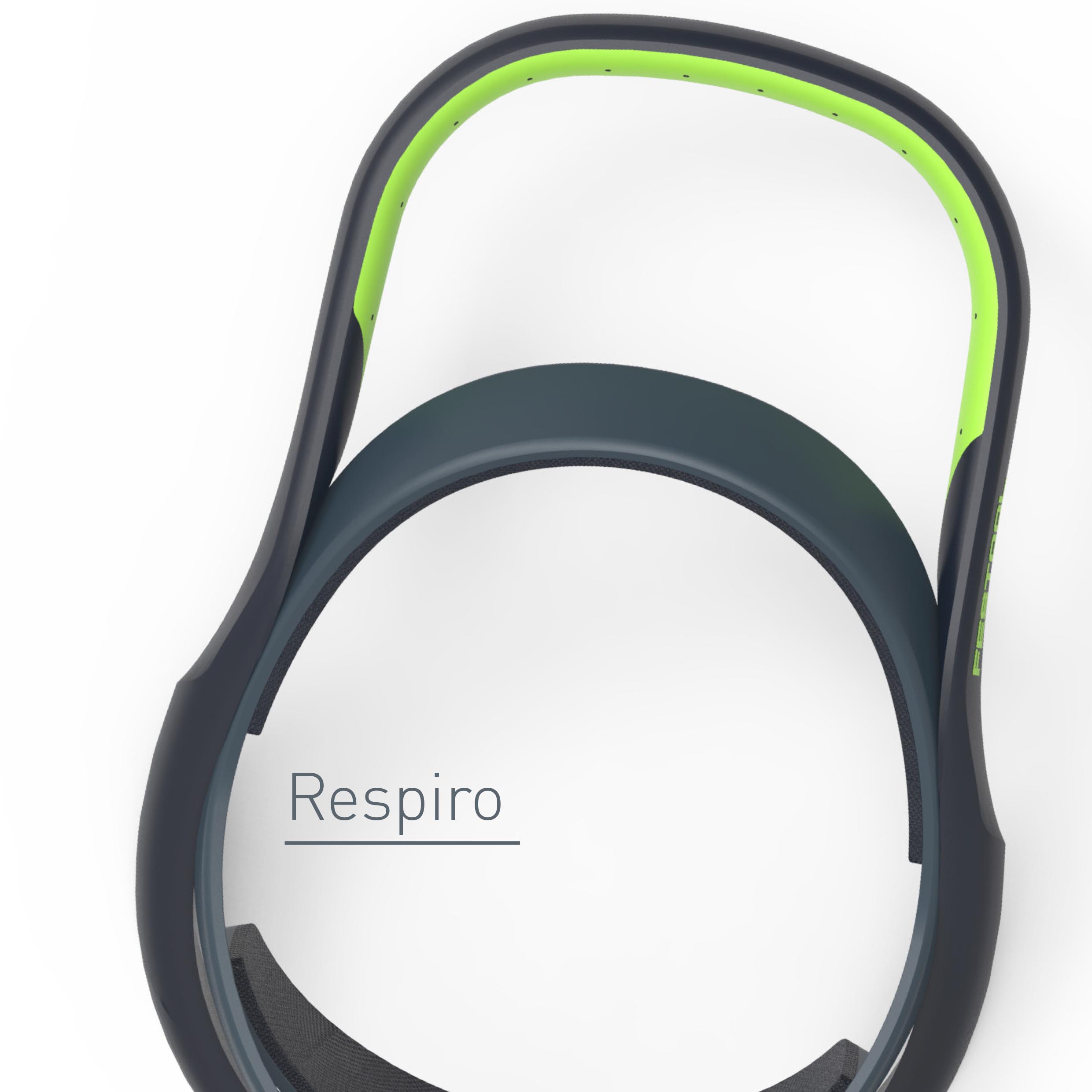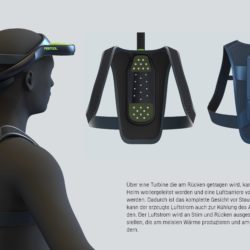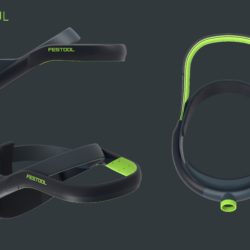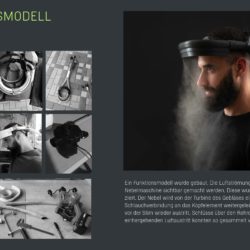Respiro
Description
Respiro is an alternative to the usual protective mask and avoids its problems. Via a turbine that is carried on the back, filtered air can be passed on to the helmet and an air barrier can be created in front of the face. This means that the entire face is protected from dust. In addition, the air flow generated can also be used to cool the worker. The air flow is expelled from the forehead and back, precisely the parts of the body that produce the most heat and are the most likely to secrete sweat.What is the Topic?
In my diploma thesis I dealt with the problem of dust generation. The aim is a solution that removes dust from the air independently and independently of the machine and makes it possible to work comfortably without health problems. It is about the conception of a system for air cleaning and dust avoidance for mobile use e.g. on construction sites and for stationary use e.g. in workshops.
Why does it look like this?
The ambient air is drawn in via the turbine on the back module and cleaned using a filter. It is ejected in a targeted and compressed manner via a guide rail on the helmet in order to protect the face from dust and dirt particles. The air is bundled and directed by the compression on the side of the string when it is ejected and can therefore create an air wall in front of the face. The Y-connection at the back of the head guides the air on both sides through an air duct. The entire cross-sectional scope remains the same and is only steered into 2 different half-tubes. The cross section of the air duct only becomes thinner where the air is to escape. In addition, the two air flows meet in the middle, which also increases the air pressure so that the air is pushed out of the louvre and creates a barrier. The air is directed at a slight angle to the chest so that it is not blown into the work area when working. The dust particles are blown down and to the side and cannot reach the face. The area highlighted in green on the helmet on the face side marks the point where air escapes. Opposite the string are 1mm openings. This air duct can optionally be operated to offer a cooling function for the worker. A light breeze exits through the openings. It is not a high-speed air emission. Because most of the air is directed through the other air duct, a lower volume flow remains. Through many small openings, the air does not escape in a bundle, but rather flat and swirls faster. The light breeze on the forehead sets in where the worker sometimes sweats the most and provides pleasant cooling. The flexible but robust plastic frame stabilizes thanks to its curved shape and forms the connection to the risers. It is covered with an air-permeable textile. The flexible but robust plastic frame stabilizes thanks to its curved shape and forms the connection to the risers. It is covered with an air-permeable textile. The design was based on the formal language typical of Festool.
What is special?
Conventional breathing masks are very difficult for workers to use. The reasons for this are poor comfort on the face, moisture build-up, poor breathability or the weight of full face masks on the head. Respiro is an alternative to the usual protective mask and avoids these problems. Via a turbine that is carried on the back, filtered air can be passed on to the helmet and an air barrier can be created in front of the face. This means that the entire face is protected from dust. In addition, the air flow generated can also be used to cool the worker. The air flow is expelled from the forehead and back, precisely the parts of the body that produce the most heat and are the most likely to secrete sweat.
What is new?
Conventional breathing masks are very difficult for workers to use. The reasons for this are a lack of comfort on the face, moisture build-up, poor breathability or the weight of full face masks on the head. Respiro is an alternative to the usual protective mask and avoids these problems. Via a turbine that is carried on the back, filtered air can be passed on to the helmet and an air barrier can be created in front of the face. This means that the entire face is protected from dust. In addition, the air flow generated can also be used to cool the worker. The air flow is expelled from the forehead and back, precisely the parts of the body that produce the most heat and are most likely to secrete sweat




